Published December 2024 | Updated July 2025
If you are undecided whether to use carpet tiles or a carpet for your project, we want you to keep in mind that “There is a right application for any flooring. The trick is to find it.” At least, that is what my boss always says. He, as well as our knowledgeable sales team, work with customers day in and day out. Customers often ask questions like, “What are carpet tiles?”, “Can I put carpet tiles in a commercial or residential space?” or “How do you install carpet tiles?”
To help you make the best decision, we created this post to discuss these questions as well as cover basics like the difference between carpet squares, Sisal Tiles and broadloom, how to create a unique design or make an area rug from carpet tiles.
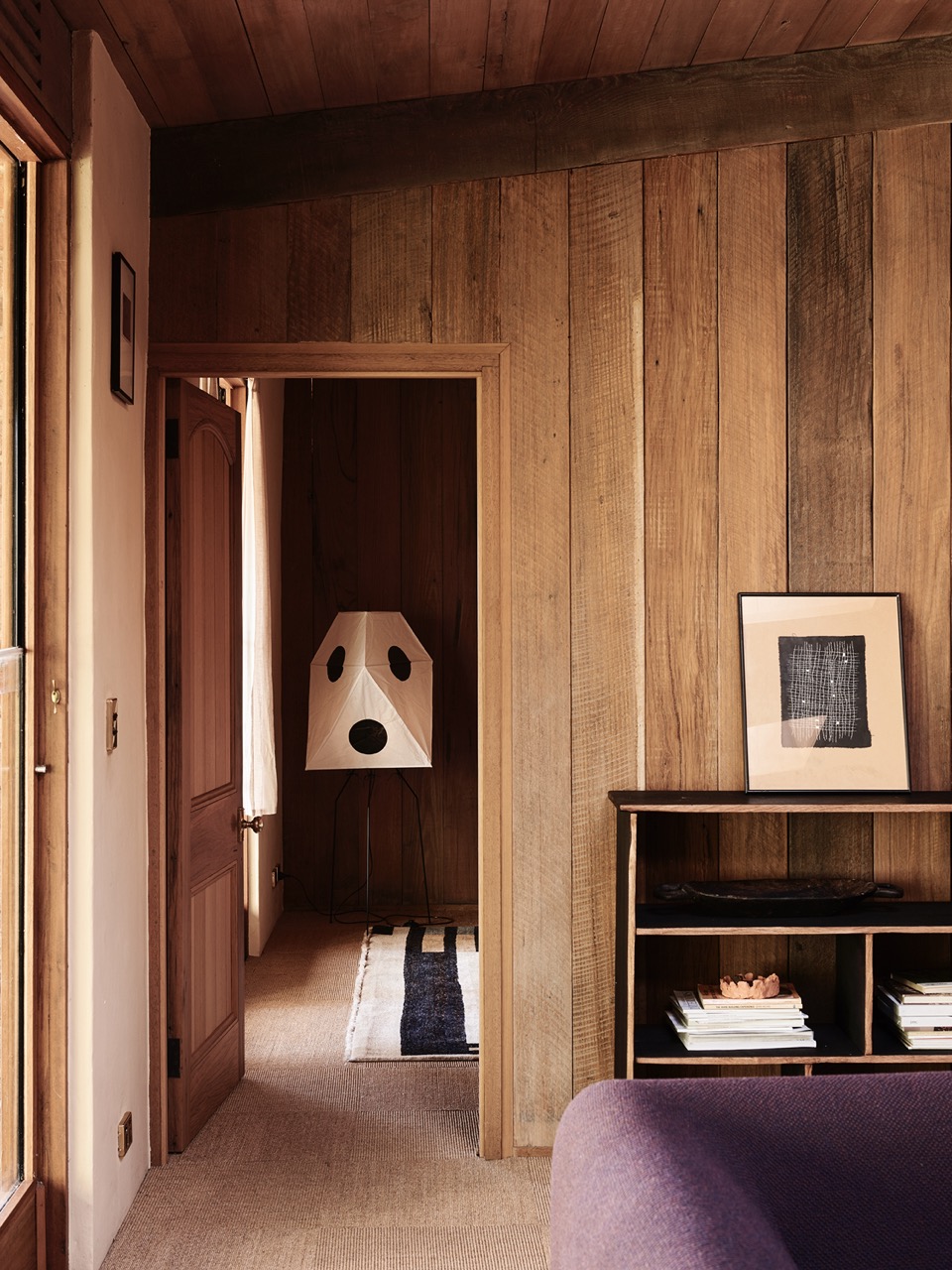
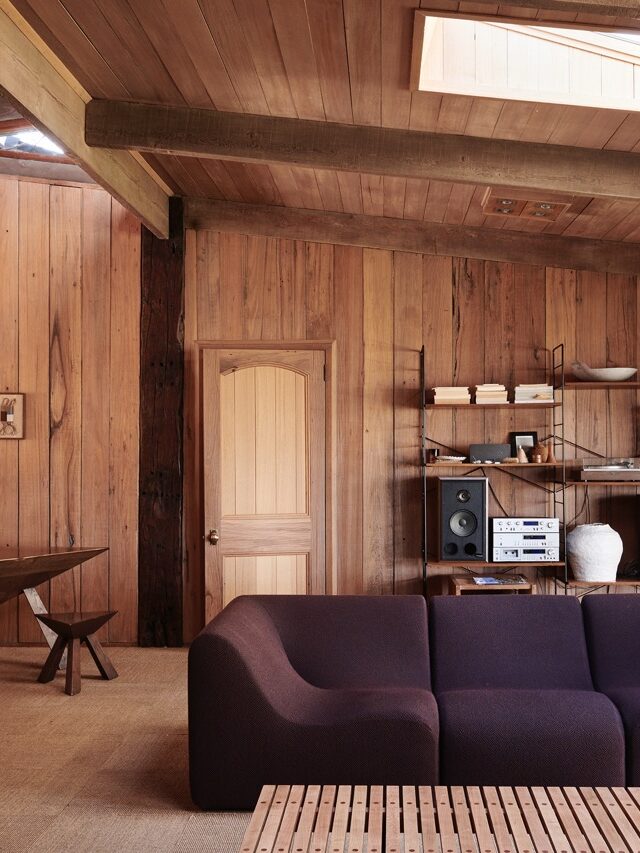
- What are carpet tiles and how are they different from Sisal Tiles?
- Carpet Tiles vs. Carpet: Differences & When to Choose Each
- Benefits of Carpet Tiles
- Differences Between Wall-to-Wall Carpet & Carpet Tile Installation
- Carpet Tile Installation Methods
- Design Patterns & Custom Sizes with Carpet Tiles
- How to Care for Carpet Tiles
What are carpet tiles and how are they different from Sisal Tiles?
First, let’s discuss carpet tiles: they are pre-cut squares or rectangles of carpet that are attached to a backing. The tile backing stabilizes the weave and prevents it from unraveling, buckling or curling. Carpet tiles can be made from synthetic materials like nylon or natural fibers like wool or sisal, and are also called tiled carpet, modular carpet, or modular flooring. Instead of being sold off the roll, as in broadloom carpeting, carpet tiles are sold by the case or box.
Sisal Tiles are carpet tiles made from our bouclé sisal carpet and attached to a durable, rigid backing. The only general difference between Sisal Tiles and carpet tiles is the pile material—one has sisal specifically, while a carpet tile could have sisal, wool, or another material. The images below show the difference in pile material between the different kinds of carpet tiles.
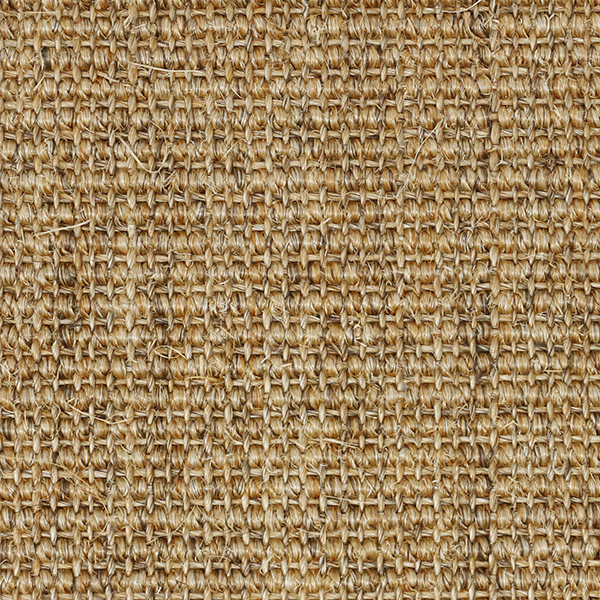
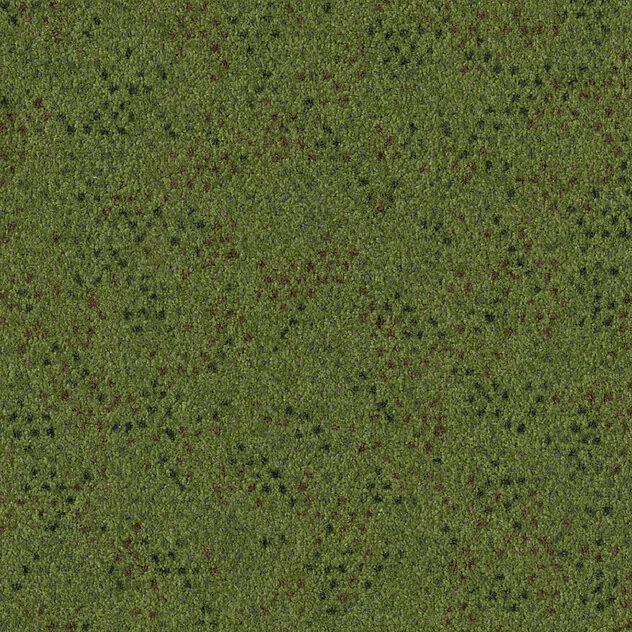
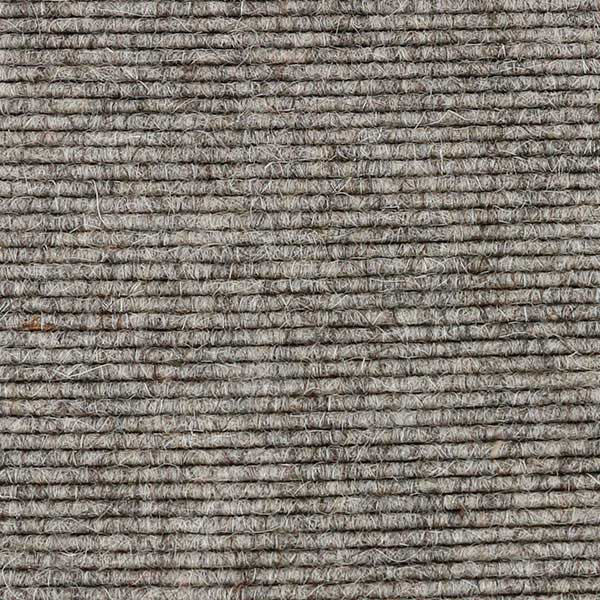
When we created Sisal Tiles, we wanted to take the natural beauty of sisal and build a product that is versatile, beautiful, durable, and easy to use. And since sisal is greatly valued by interior designers and design-minded consumers for its timelessness, a flexible carpet tile like Sisal Tile adds another great option for flooring.
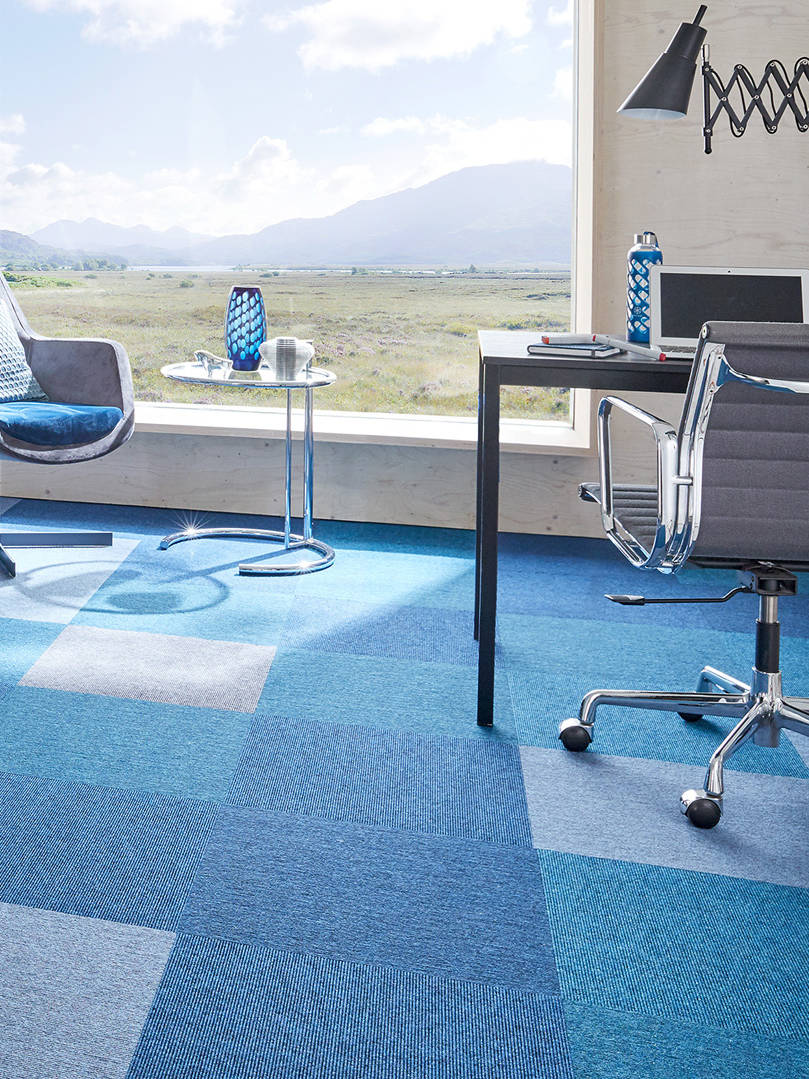
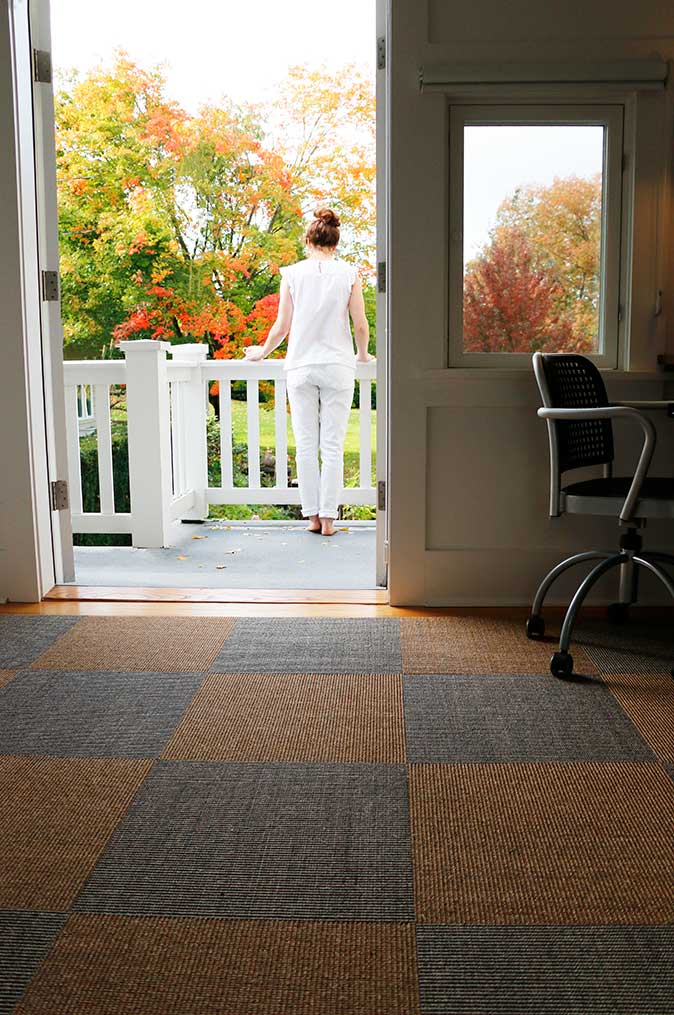
checkerboard: alternating carpet tiles by color and rotating each tile by 90 degrees builds visual interest and adds texture
Carpet Tiles vs. Carpet: Differences & When to Choose Each
In general, there are no material differences in the pile between a carpet tile and its broadloom counterpart (if it has one). The difference is in the backing and format. Sisal Tiles are a bouclé sisal carpet cut it into squares, and adhered to a backing, whereas Madrid is a bouclé sisal carpet sold off the broadloom roll for area rugs or wall-to-wall installations. Deciding between carpet tile or broadloom carpet depends on factors like timelines, design flexibility, budget, and the needs of the space.
Let’s go over some of the important distinctions when deciding whether or not to use tiles or carpet.
| Carpet Tiles | Broadloom Wall-toWall | |
|---|---|---|
| Use: Residential or Contract? | Check Product Specifications. Sisal Tiles are rated for residential or light contract and tretford®’s Interlife Tiles or FLEXIBEL™ tiles are heavy contract. | Check Product Specifications. Most natural fiber carpets are for residential use. Some sisal carpet is contract grade and there is a variety of commercially rated carpets. |
| Installation | Easy, DIY with loose lay, or professional installation for permanent glue down. Overall less expensive to install. | Professional installation or expert installer recommended. Permanent and more expensive to install. |
| Final Look | Seams or lines between tiles visible, but design flexibility and ability to create patterns. | A seamless, cohesive look but less design flexibility and limited to design or pattern present in carpet. |
| Repairs to Damaged or Stained Flooring | Damaged or stained tiles can easily be swapped out for new tiles. | Complete reinstallation may be required with stained or damaged carpet. |
Sisal Tiles: Easy To Install, Easy To Replace
Benefits of Carpet Tiles
Carpet Tiles are Versatile
- Creative Control: Easily move and place individual tiles to build your own design or layout.
- Modular Fit: Perfect for covering irregular or odd-shaped rooms.
- Room-to-Room Flexibility: Use them in home offices, playrooms, or basements.
- Custom Coverage: Create a wall-to-wall look or a custom-sized rug, no installer needed.
Use Carpet Tiles for an Instant Update
- Mix & Match: Combine colors or textures to make a design that’s uniquely yours.
- Refresh: Maybe you already have carpet or Sisal Tiles in your space and need a refresh. Just rearrange the tiles or add in new colors.
- Customize: Add a full-tile or half-tile border to the room or carpet tile area rug in a contrasting or harmonizing color.
Easy to Install
- Do It Yourself: Great for DIYers looking for a fast and great looking way to update flooring.
- Less Waste: Buy only what you need. And if a tile is damaged, replace only the damaged or stained tile, not the whole floor.
- Budget Friendly: No need for a professional installer. Easy to add more tiles over time as your budget permits.
Differences Between Wall-to-Wall Carpet & Carpet Tile Installation
Many of our customers are able to install carpet tiles themselves, while a wall-to-wall installation is more intensive and requires professional help. Here are some key differences between a wall-to-wall carpet installation and a carpet tile installation:
| Wall-to-Wall Carpet Installation | Carpet Tile Installation |
| A roll of broadloom carpet can weigh hundreds of pounds and be difficult to handle. | A box of Sisal Tiles weighs 60 pounds and most carpet tile boxes weigh approx. 50 pounds. |
| Professional installation is recommended and adds to the overall project expense. | Do-It-Yourself installation is completely possible, saving labor costs. Read our carpet tile install guide here. |
| It’s pretty permanent. A fitted carpet is meant to last for many years. If your style preferences change, your carpet may not be able to. | Even a permanent carpet tile installation can be swapped out more easily than wall-to-wall carpet. |
| Stains or damage will require professional assistance to fix, or a complete re-installation. | A heavily soiled tile or damaged tile can be pulled up and exchanged with a fresh new tile. |
A successful and beautiful carpet installation requires expertise, especially with a flat weave carpet (our specialty!). To learn more about installing flat weaves and how to prepare, read our comprehensive Flat Weave Carpet Installation-Everything You Need To Know blog post.
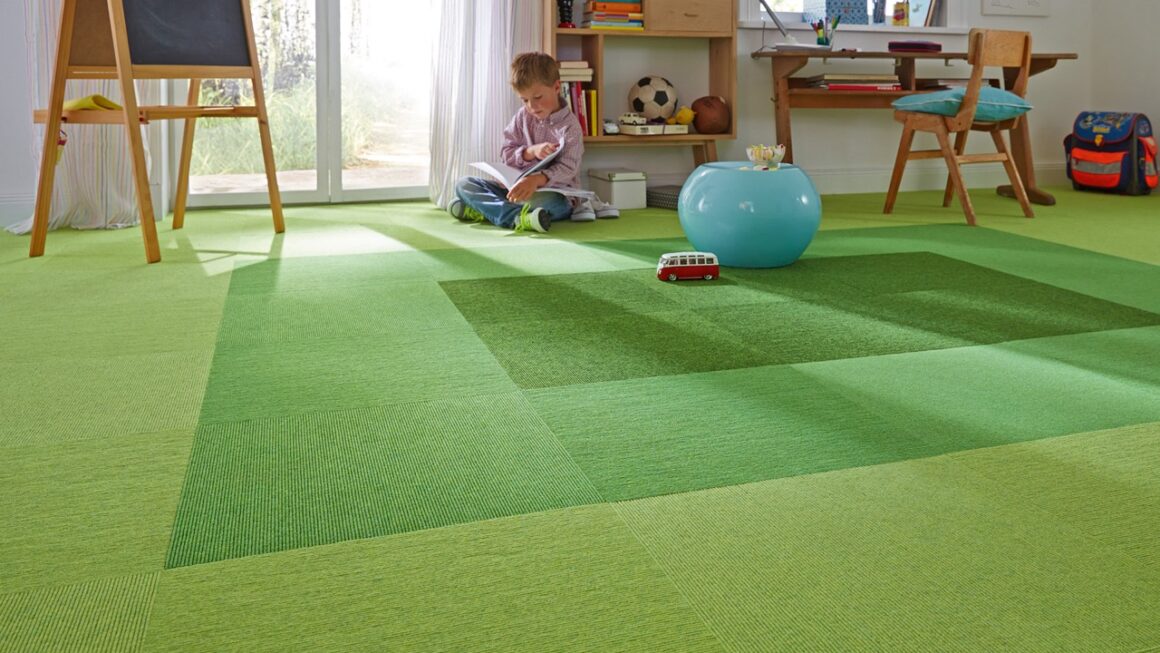
Carpet Tile Installation Methods
The two main carpet tile installation methods are loose lay and permanent. Both methods take less time than wall-to-wall and thus, save costs. Loose lay is especially suited for DIY. Visit our comprehensive Carpet Tile Installation Guide for in depth guidance.
- Loose Lay Installation The easiest and fastest way is a loose lay or temporary installation. This method is often used in residential settings or in showrooms, exhibition stands, etcetera, where quick assembly and disassembly is the key. Tiles are secured in place by double-sided carpet tape, peel-and-stick adhesives, or furniture.
Planning a carpet tile installation? We share tips and tricks to help you plan your project in our comprehensive Carpet Tile Installation Guide.
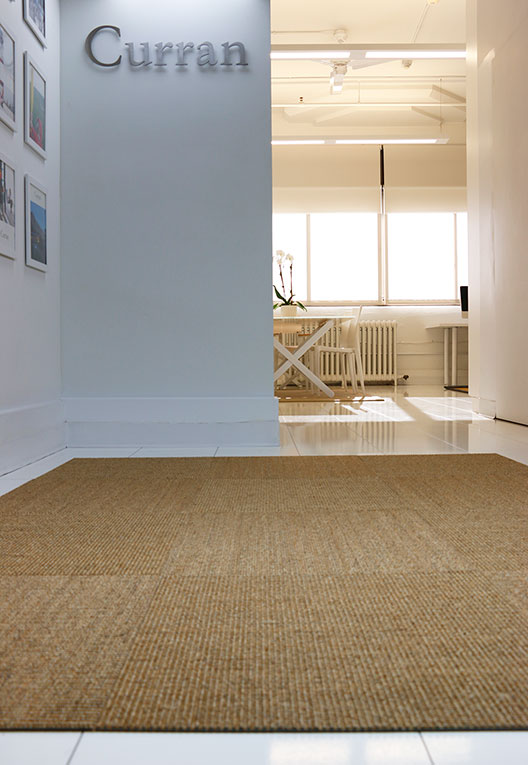
Design Patterns & Custom Sizes with Carpet Tiles
It’s easy to get creative with carpet tiles. Since they are modular, they lend themselves to experimentation. Play around with patterns or colorways to find the right look and fit, or cut tiles for unique shapes. To get you started, here are some of the most popular carpet tile pattern ideas.
Tonal Stripes
Our Sisal Tiles showcase a classic, fine bouclé structure in earthy tones that when combined, create subtle stripes. Stripes can be easily created from two (or more) colors with any carpet tile.

Borders
Use a darker tile to create a border either around the edge of a room or to define the border of a carpet tile area rug. Carpet tiles cut in half to create a rectangle make a refined border and help with the budget.


Checkerboard & Plaids
Clever checkerboard patterns enliven a space. A checkerboard tile pattern can consist of two colors, or three for a more intricate buffalo or diagonal checkerboard.
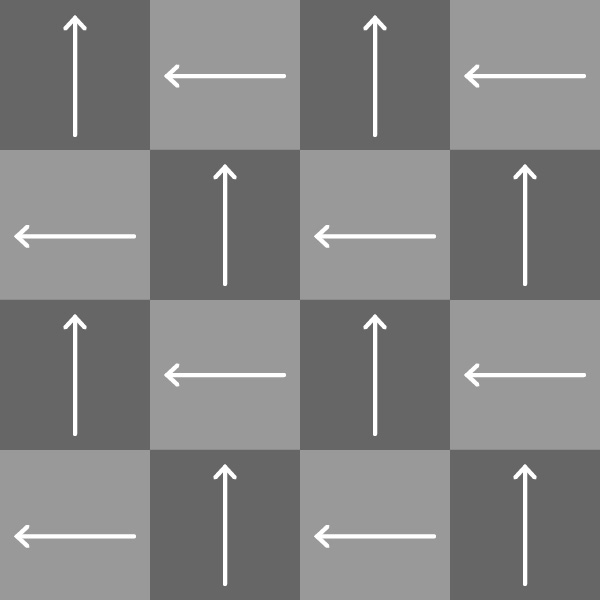


Herringbone & Basketweave
You can achieve a herringbone or chevron pattern as well as a basketweave if you are willing to cut the tiles. The rectangular, or plank, shape of the tile allows more flexibility.
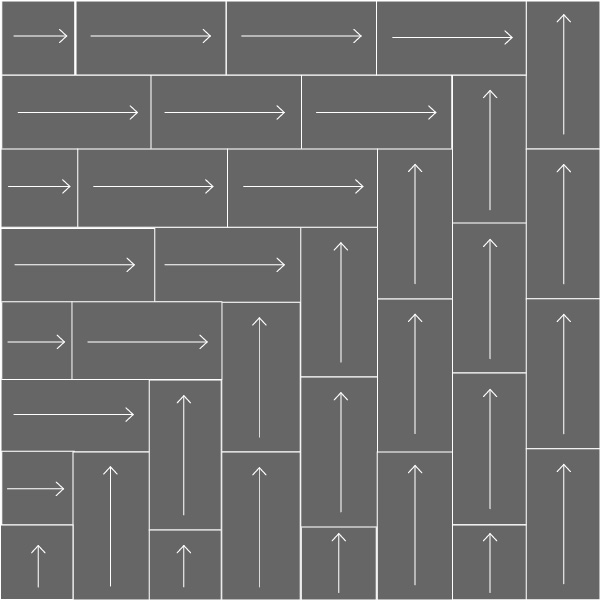

For expert tips on cutting tiles and planning a carpet tile installation, we highly recommend our comprehensive Carpet Tile Installation Guide.
Carpet Tiles as a Custom Rug
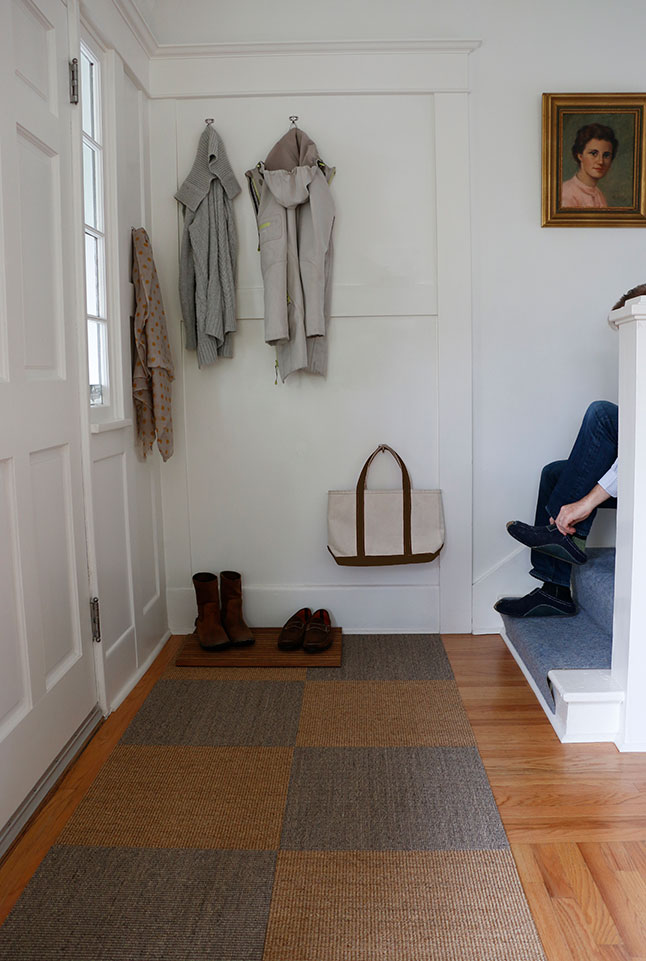
Your favorite carpet tiles can be used to create an area rug. Maybe you love the texture of Sisal Tiles or the bright colors available with Interlife Tiles but the cost of a custom rug is too high or your budget doesn’t have room for installing tiles wall-to-wall. A couple cases of carpet tile may be all you need to craft a custom, unique rug for your space.
Tips for Designing Custom Carpet Tile Patterns
Here are some steps to take if you are creating a custom pattern or area rug:
- Sketch Your Layout First Draw your pattern on graph paper or use digital software to visualize how different colors and textures will work together.
- Size Determine the ideal size for your rug or installation and the size of each carpet tile. How many rug squares will you need to fill the area? How many tiles are in a case? How many different colors? Do the math.
- Order Extra Material Complex patterns generate more waste from cuts and fitting. If you are creating a complex design, order 5–10% extra tile to cover practice cuts and unexpected needs.
- Check Dye Lots & Tile Direction Tiles can vary slightly between dye lots. Group tiles from the same lot, and keep arrows (often printed on the backing) pointing the same way if consistency matters.
- Mix Textures Thoughtfully Consider using contrasting textures like loop pile and cut pile to add depth to your design.
- Lay Out Tiles Dry Before Cutting or Gluing Place tiles loosely on the floor to see how the pattern flows and adjust as needed before making permanent cuts.
- Photograph Your Layout Take photos of your dry run. They’re a lifesaver if you need to pause and come back to the install later.
- Anchor To keep your design together and stable, apply adhesive tabs or squares to the underside of the tiles at the adjoining corners. At this point, you can apply a strong one-sided carpet tape or duct tape underneath to the seams and outer perimeter for added stability.
How to Care for Carpet Tiles
Care for carpet or Sisal Tiles is the same as caring for a rug or carpet.
- Vacuum frequently to remove fine dirt particles, which often add to wear and tear. Do not use a beater bar.
- Do not place Sisal Tiles or our Contract Coir Tiles in damp environments like bathrooms or where spills are likely to occur such as kitchens since natural fiber floor coverings are inherently absorbent.
- Remove any spills as soon as they are discovered and follow the detailed Care guidelines that came with the product or from our website.
- Replace dirty or damaged tiles with a new, fresh tile. This quick change is one of the greatest benefits of carpet tile, so consider ordering extra tiles just for this purpose.
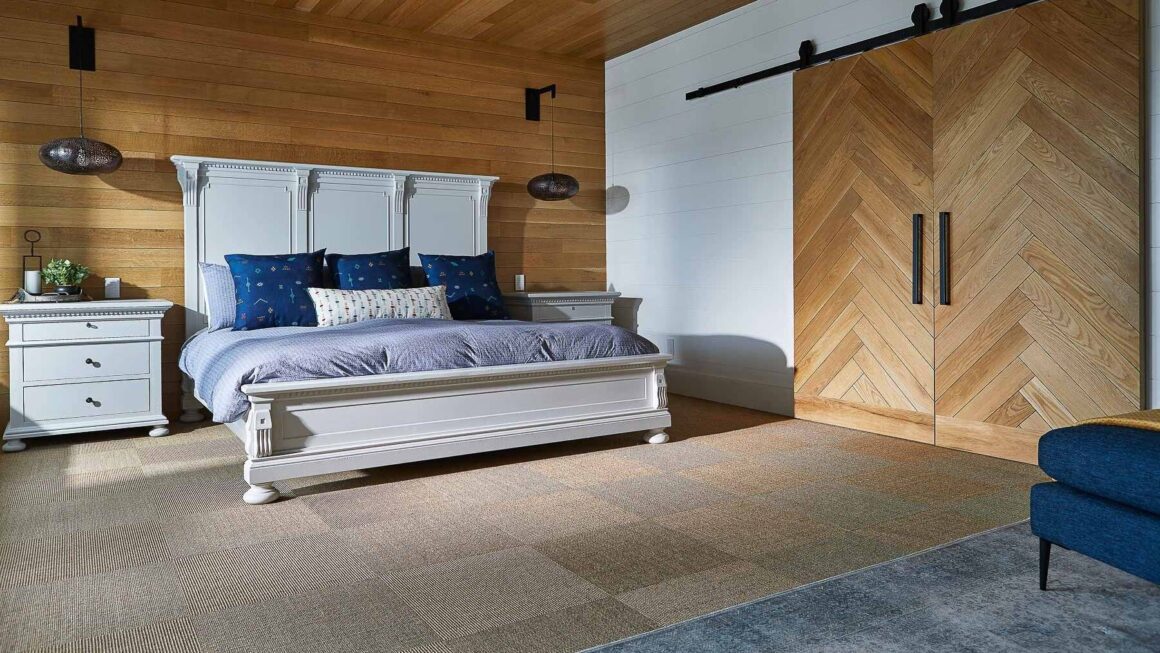
Final Thoughts
The numerous advantages of carpet tile make this flooring option a consistent best-seller amongst residential customers, interior designers, property managers, and architects. Although carpet tiles don’t have the same seamless look that we love about wall-to-wall carpeting, the ease of installation, the visual interplay of textures and colors, and the ability to swap tiles in and out are powerful benefits.
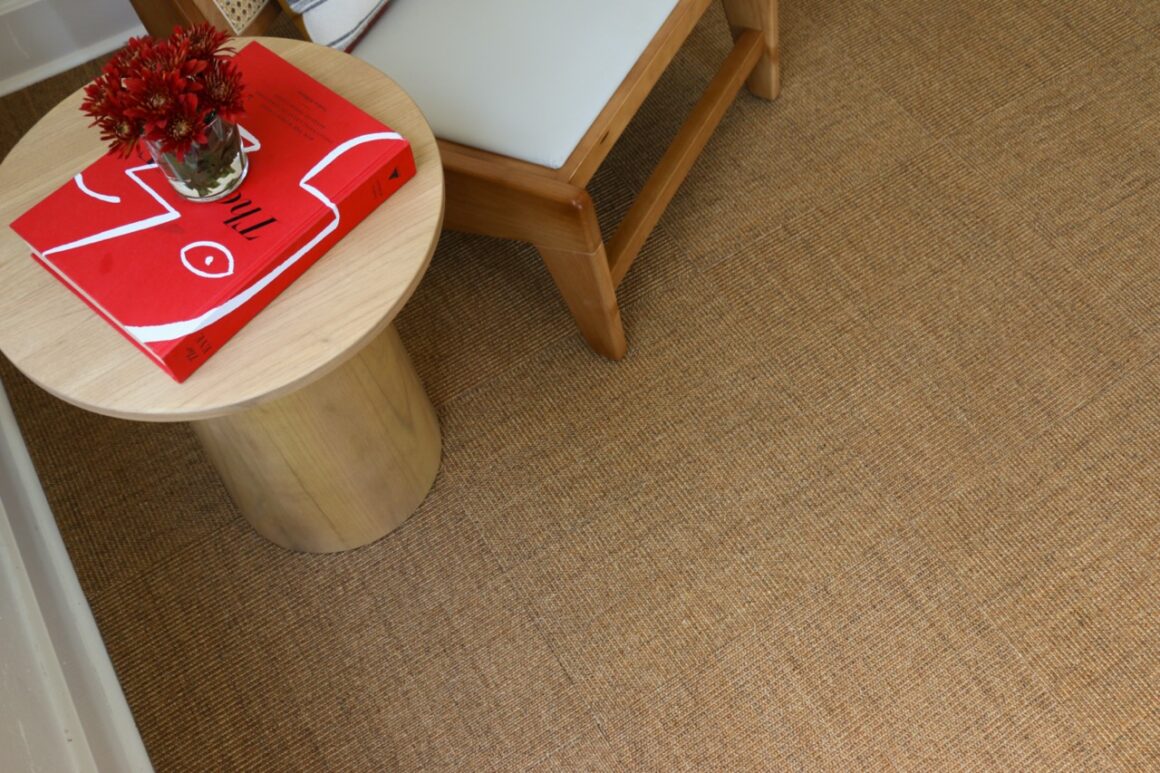
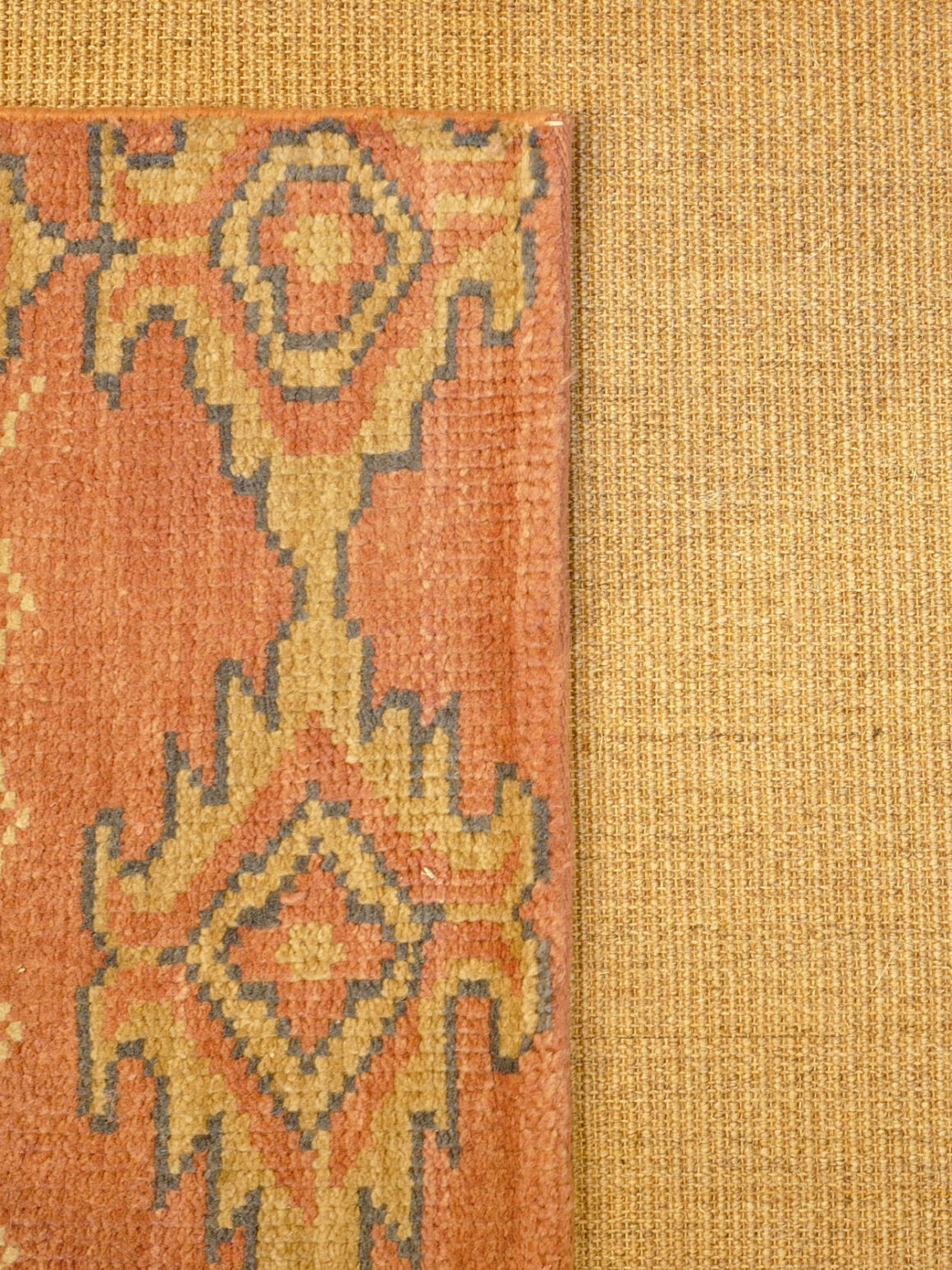
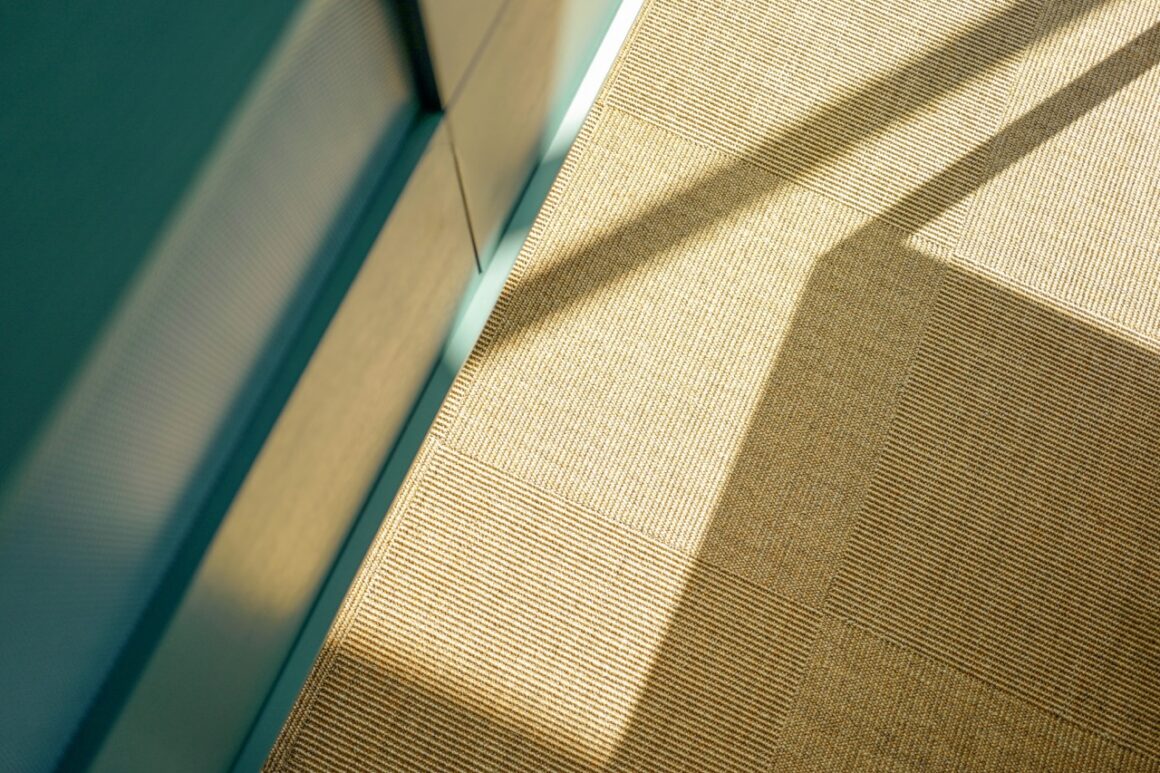
Regardless of which flooring option you choose, we hope this post pointed you in the right direction. If you are still unsure, we have many resources available, from choosing the right rug based on your design style to in depth discussions about natural fibers like sisal, seagrass, and jute. Plus, you can always reach out to our customer service team if you need guidance or assistance.

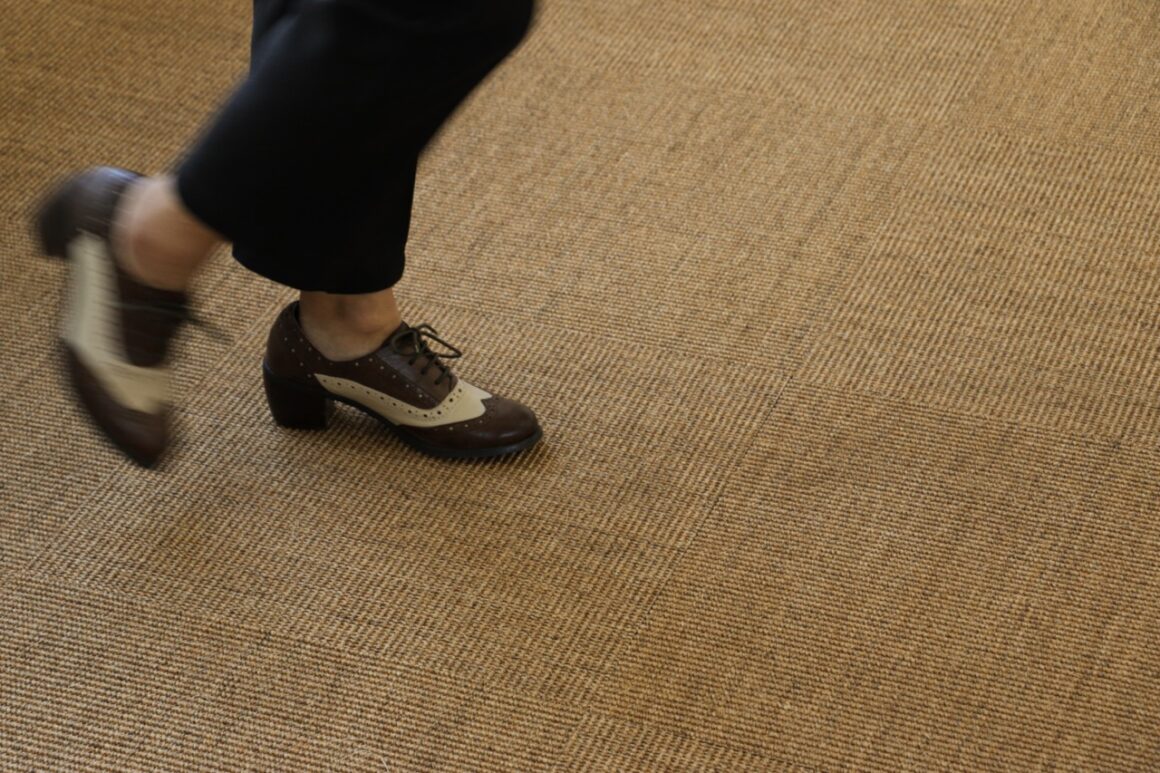
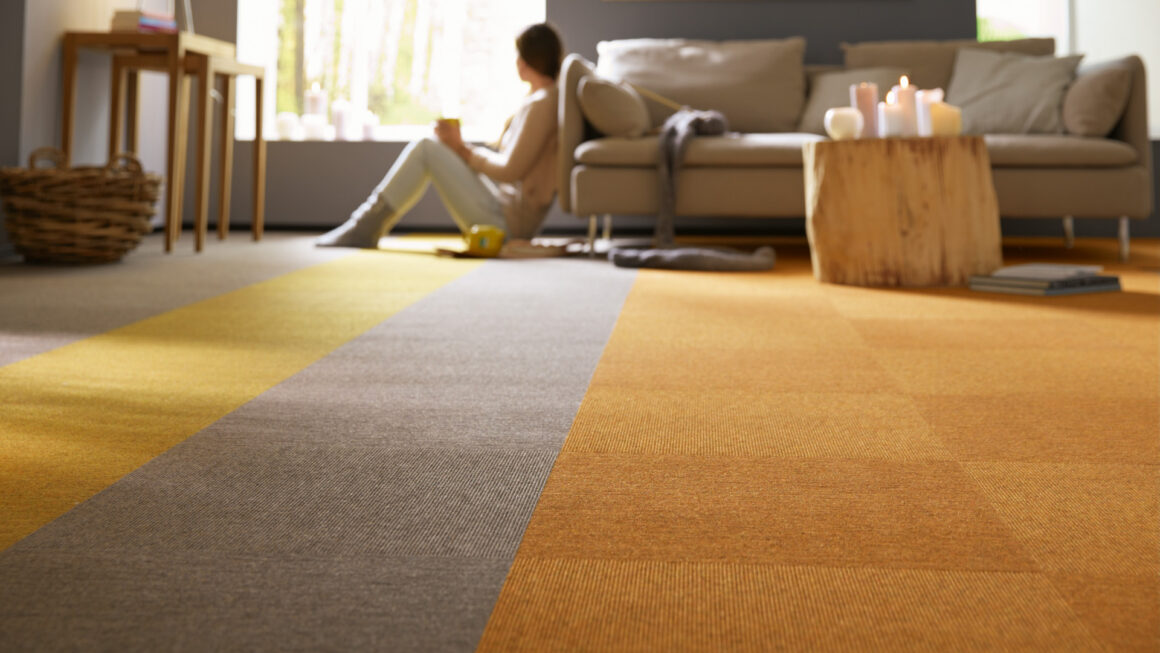
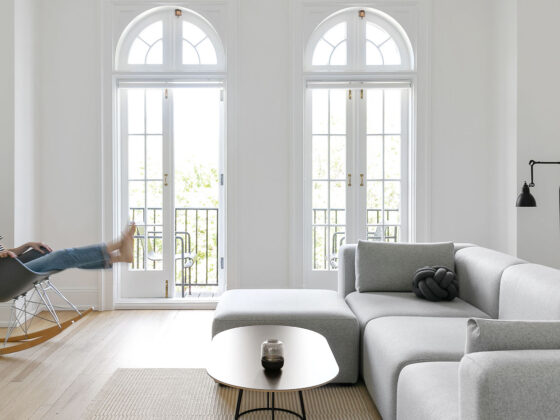

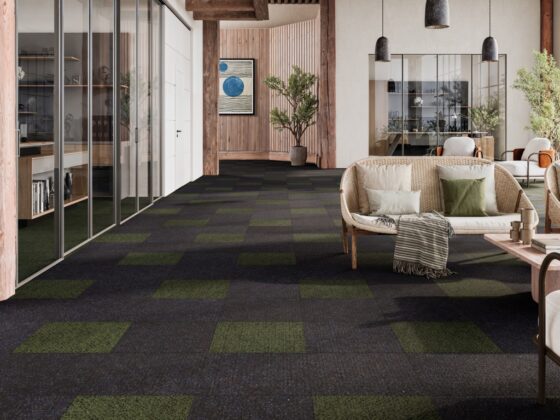

8 comments
Hi, can you please tell me the price of a box of 16 Sisal tiles.
Kind regards,
Lee Wiltshire.
Hi Lee,
Thank you for your interest in our sisal tiles. Tiles are a great option for many spaces! Here is a link to Sisal Tiles for more information, including the cost of a case (16 tiles). Please don’t hesitate to reach out to our customer service team if you have any more questions about selecting or installing sisal tiles. We would love to help.
Best,
Christy
Deciding between carpet and carpet tiles is like choosing between a cozy blanket and a quirky patchwork quilt for your floor. Do you want a smooth, uninterrupted flow, or are you feeling a bit ‘floor-crazy’ with a side of whimsy? Either way, it’s a tale of two textiles, and we’re rolling out the red (or maybe beige?) carpet confusion!
“Your blog on ‘Carpet vs. Carpet Tiles’ is a fantastic resource! It provides clear insights into the pros and cons of both options, making it easier for readers to make informed flooring choices. The concise yet informative content is a valuable guide for anyone embarking on a flooring project.”
Thanks, Liam, glad you found the information helpful! Let us know if there are any other flooring-related questions we can help you with.
Best,
Patrick Hyde, Content Manager
Thanks for sharing information about rugs and carpet
Thanks for sharing best ideas of carpets.